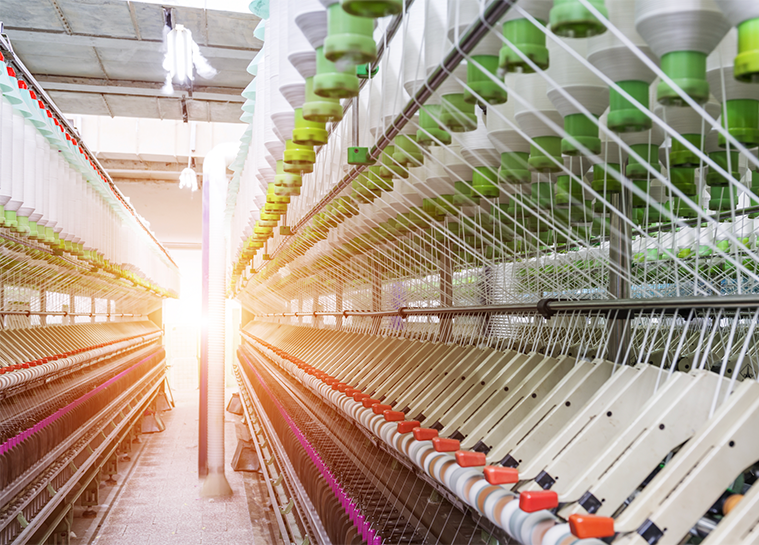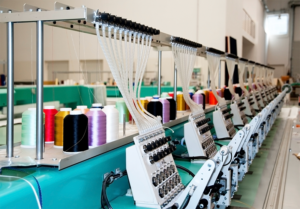Ahead of the pack in the global shift to responsible fashion

Short lead times and a focus on sustainability turn Europe’s fashion buyers toward Morocco’s experienced and agile textile sector
SHARE THIS ARTICLE:
Morocco’s textile industry is a well-proven sector anchored in long tradition, particularly in leather and garment manufacturing. To illustrate its prominence in the Moroccan economy: it provides 27 percent of all industrial jobs and its exports, which were worth $3.6 billion in 2021, account for 12 percent of the country’s total.
According to the Moroccan Agency for Investment and Export Development, 1,628 companies currently operate in the sector, which produce 1 billion pieces each year. Calculated by volume of investment, the main segments those companies operate in breaks down as: 52 percent in fast fashion, 17 percent in technical textiles, 11 percent in denim, 11 percent in mesh fabrics and 7 percent in home textiles.
While some countries known as fast-fashion specialists are associated with low-cost, unethical practices—that is most certainly not the case with Morocco, where fast fashion equates to the fact that “customers have realized Morocco can deliver flexibility and nearshoring with good-quality service, which has made the country a key player in supply chains and the new world textile map. We understand how important it is for customers to be able to shorten lead times and change anything in their orders up to the very last minute,” asserts Mohamed Benajiba, managing director of Vita Couture, a Moroccan one-stop fashion platform that operates from design to logistics.
This adaptability was demonstrated during the COVID-19 pandemic, when Morocco’s textile industry rapidly shifted production to protective masks for the local market but also for export to Europe. As the challenges of the pandemic have receded, the industry is back to normal business, with its exports increasing by 28.2 percent in value over the first quarter of 2022, based on data from the Moroccan High Commission for Planning.
According to Fatima-Zohra Alaoui, general director of the Moroccan Association of Textile and Clothing Industries (AMITH): “The good performance of our exports is largely due to European clients switching providers from Asia to the Mediterranean region as they increasingly turn to nearshoring.” In this switch, Morocco’s Tanger Med Port that lies under 9 miles from Europe is a decisive asset, thanks to its dedicated textile corridor and capacity to clear customs in less than an hour.
“Customers have realized Morocco can deliver flexibility and nearshoring with good-quality service, which has made the country a key player in supply chains and the new world textile map.”
Mohamed Benajiba, Managing Director, Vita Couture

Quick access to Europe, as well as to the U.S., is one reason why more international manufacturers are setting up bases in Morocco as well. In 2020, for example, China’s Omega Textile invested around $7.6 million in a high-tech textile production plant. “We made a strategic choice to settle in Morocco for its political stability and privileged location, plus its available and skilled workforce,” Omega’s country manager, Cai Jie, has revealed.
Morocco has also anticipated the global shift toward sustainable fashion faster than others. In 2021, AMITH published a new strategic roadmap for the whole industry—Dayem—which means ‘sustainable’ or ‘durable’ in Arabic. “The word is perfect, because it emphasizes that Morocco’s textile industry is going to grow, but with the sustainability and the durability that international customers are calling for,” explains Benajiba.
The strategy is based on four pillars that form the backbone of Moroccan industries today—agility, innovation, quality and eco-responsibility—and it aims to increase the value of the sector’s exports to $6 billion by 2035 and for 60 percent of all production to be dedicated to co-contracting and finished products, compared to the current 35 percent. To achieve these objectives, the roadmap highlights additional need for training and skills development, notably by creating integrated “Textile Valley” centers.
The strategy also calls for the establishment of two innovative textile eco-parks of 100 hectares each in Casablanca and Tangier. In addition, AMITH is encouraging the exploration of new sustainable materials, with Morocco’s recent legalization of industrial hemp cultivation seen as one enticing opportunity to develop a natural and responsible local textile.
Many Moroccan textile companies are already at the global forefront of responsible fashion, however. One is Vita Couture: 60-70 percent of the fabrics it uses today are sustainable and that should rise to 90-100 percent next year. Another is Evlox, a leading manufacturer of denim for brands like Diesel, part of the multinational OTB Group. Evlox is currently collaborating with OTB on an innovative research project backed by the United Nations Industrial Development Organization (UNIDO) that aims to create high-quality fabric yarns from locally sourced recycled cotton.
According to Sara Mariani, OTB’s chief sustainability officer: “We believe that working hand-in-hand with our partners and suppliers while engaging with local institutions and supporting international organizations such as UNIDO is fundamental to solving one of the biggest issues that the fashion industry has: waste. We’re committed to pursuing the engagement with our Moroccan partners to find effective solutions.”

